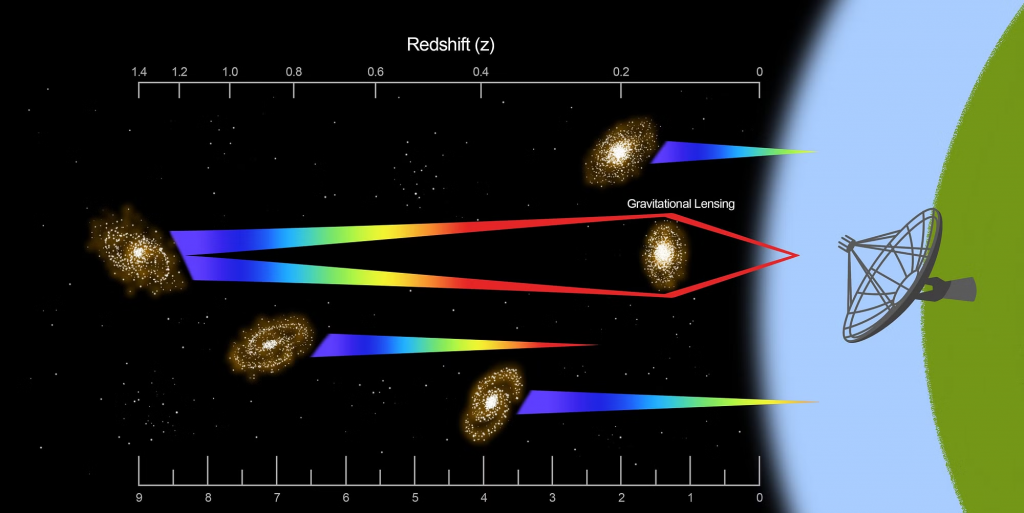News Highlight
The Giant Metrewave Radio Telescope in Pune helps detect atomic hydrogen from a far-away galaxy.
Key Takeaway
- The Giant Metrewave Radio Telescope (GMRT) in Pune detected a radio signal emanating from atomic hydrogen in an incredibly distant galaxy.
- In addition, this is the farthest astronomical distance over which a signal has been detected.
- The research was published in the journal Monthly Notices of the Royal Astronomical Society.
- Astronomers utilised data from the telescope from McGill University in Canada and the Indian Institute of Science (IISc) in Bengaluru to identify atomic hydrogen.
Giant Metrewave Radio Telescope (GMRT)
- About
- The GMRT is a low-frequency radio telescope that aids in investigating various radio astrophysics problems from close solar systems to the observable universe’s boundary.
- Additionally, it is situated in the Indian city of Pune.
- Scientists have found a radio signal from atomic hydrogen in a faraway galaxy at redshift z=1.29 using GMRT data.
- The signal found by the team was released from this galaxy when the universe was only 4.9 billion years old, giving this source an 8.8 billion-year look-back time.
- Furthermore, this galaxy’s atomic hydrogen mass is about twice as large as its stellar mass.
- These findings show that it is possible to observe atomic gas from galaxies at cosmic distances in similar lensed systems with a small amount of observing time.
Specifications of the Electronics in GMRT
- Firstly, the GMRT Antenna operates on six frequencies ranging from 50 MHz to 1500 MHz.
- The frequencies have intense polarization and can operate in several bands.
- Low-noise amplifiers, Mixers, local oscillator synthesisers, and IF amplifiers are also included in GMRT.
- There are optical fibres and interconnections with the entire dish array.
- This interconnection aids in transmitting telemetry signals and local oscillator communications.
- A 2,30,000-channel FX-type correlator is included in GMRT.
- Moreover. this correlator includes the option of spectral channels.
Atomic hydrogen
- About
- Firstly, it is a galaxy’s primary energy source for star formation.
- When hot ionised gas from a galaxy’s surrounding medium descends onto the universe, it cools and creates atomic hydrogen.
- In addition, this is converted into molecular hydrogen, eventually leading to the stars’ development.
- Understanding the evolution of galaxies over cosmic time necessitates following the evolution of neutral gas at various cosmological times.
- Atomic hydrogen emits radio waves with a wavelength of 21 cm, indicating that the wavelength directly indicates the atomic gas concentration of nearby and distant galaxies.
- However, due to existing telescopes’ poor sensitivity, this radio signal is weak and impossible to detect the emission from a distant galaxy.
Fast Radio Burst (FRB)
- Overview
- FRBs are dazzling flashes of light (radio Pulses) and solid and millisecond-long bursts of radio waves created by unknown sources in the distant cosmos.
- Their origins are unknown, and their look varies.
- They were discovered in 2007 while scientists combed through archived pulsar data.
- Pulsars are spherical, compact objects in space around the size of a major city but have more mass than the sun.
- They frequently resemble flickering stars but are not stars.
- Significance
- It can be utilised to comprehend the universe’s three-dimensional structure of matter.
- It will even aid in learning about the universe’s origins and evolution.
- Big questions remain, and this object provides us with challenging answers to those questions about the Universe.
Pic Courtesy: Down to Earth
Content Source: Down to Earth



